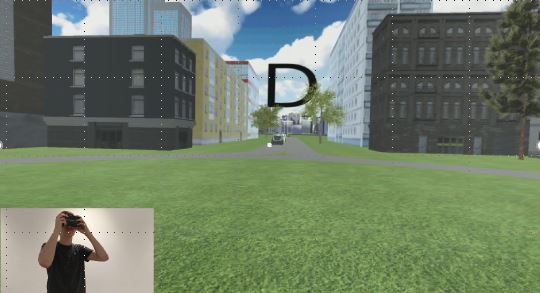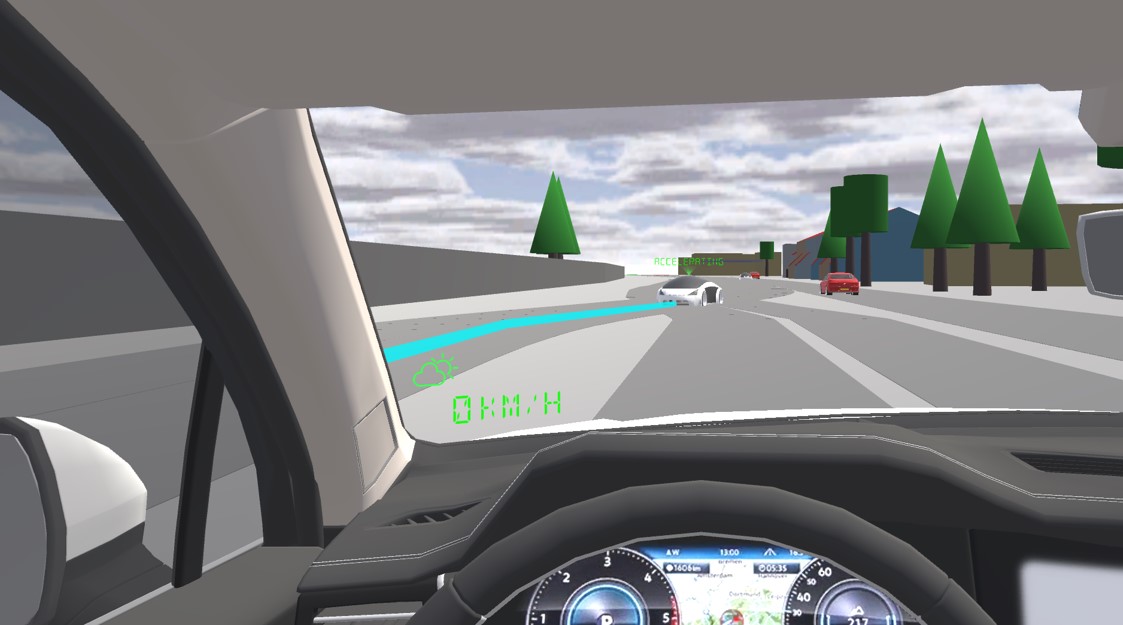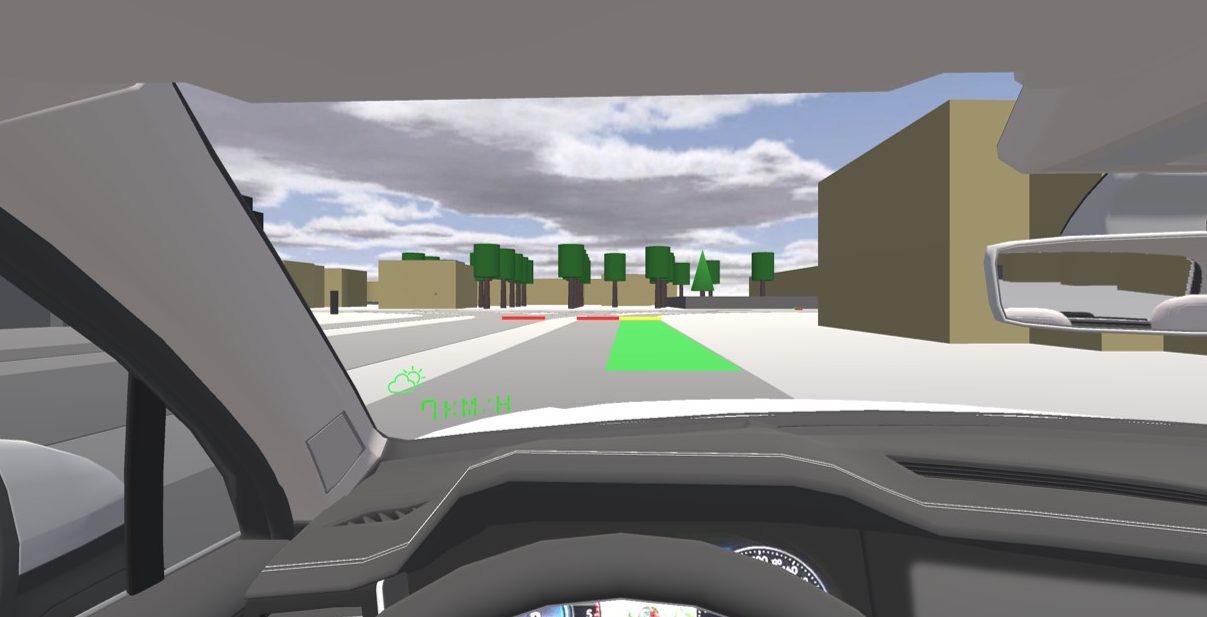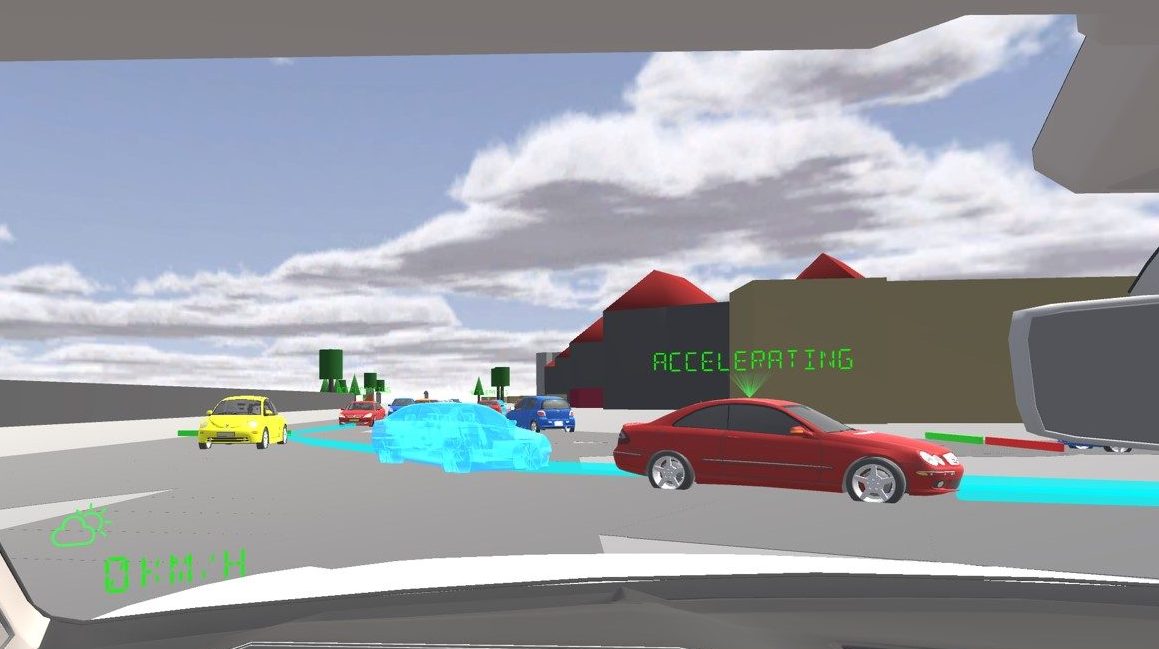Online gaming is not only fun, but a growing market already exceeding the film production and streaming industries. And it is often associated with popular games produced by leading gaming company Unity. At PTV Group, we’ve noticed that the cutting-edge visualizations by Unity could also be helpful to create road safety gadgets that keep drivers and pedestrians away from accidents.
So, our developers combined some of the software features offered by Unity with PTV Vissim, the world’s most advanced and flexible traffic simulation software.
“This co-simulation resulted in a number of great ideas”, says Isaac Vargas Gordillo of PTV, “the virtual reality experience of city car driving and walking can now be turned into effective road safety and planning tools. We hope to develop these tools further, and welcome ideas from developers outside PTV“.
Here are some of the most exciting applications of the co-simulation between Unity and PTV Vissim software:
Pedestrians & road simulator

Too often pedestrians are not prioritized when it comes to infrastructure planning. This still results in a too high number of accidents involving pedestrians. They are often the victims of collisions with cars and other vehicles and those who are more vulnerable than others are children, the elderly or persons with disabilities.
Our experts developed a demo app for mobile devices, which can be used with the virtual reality viewer Google Cardboard. With this app, powered by a traffic simulation from PTV Vissim and processed by Unity for better visualization, get a virtual reality experience through their portable devices with a point-of-view as pedestrians.
But here’s the twist: information sent by PTV Vissim is also extracted from vehicles in the proximity of the pedestrians, for example the vehicles’ intended trajectories. Then, this information is displayed in a simple and “clean” way in the app, in order to give pedestrians more certainty about upcoming movements of nearby vehicles. This, of course, if implemented would have the potential of reducing fatalities and injuries in risky areas.
Windshield as Augmented Reality screen

What if your car’s windshield could provide you with essential traffic information, increasing your safety? Through Virtual Reality (VR) we are able to explore what a future with Augmented Reality (AR) windshield looks like.
Using PTV Vissim and Unity, our experts developed a driving simulator that provides car drivers (or passengers of Autonomous Vehicles) with important details about nearby vehicles and traffic lights, through a display on their vehicles’ windshield.
This information, such as trajectories of the other vehicles, traffic light timing, and predicted vehicle positions, is displayed on the windshield. To achieve this, PTV Vissim processes the traffic information while Unity graphically renders that information through the windshield.
Talking traffic lights

One potential application of the AR windshield concept tackles a situation dreaded by many drivers: just as they are about to cross an intersection in green light, the signal switches to yellow or red, causing them to suddenly break (or speed up if they dare).
But what if you could get informed in advance whether you have enough time to cross the intersection? Well, that’s not such a distant vision, say our developers.
Real-time information from signal controls (i.e, traffic lights) is already integrated into PTV Vissim. In this project, we explore the possibility of communicating this information from the traffic lights to nearby vehicles in an unconventional way, using Unity simulations.
Our experts are especially interested in “green bands” – an augmented reality feature that can be displayed on the vehicle’s windshield. When a “green band” is displayed, a portion of the road in front of the vehicle is seen on the windshield painted in green, so the driver can go through the next intersection with certainty that the traffic light will remain green during the crossing.
Such a successful communication between traffic lights and vehicles can give drivers the peace-of-mind that the traffic light will stay green until they complete the crossing, not worrying they will have to suddenly brake. This can also affect speed controls: braking or accelerating will become smoother, improving traffic flow, increasing road safety and lowering gas emissions from heavy acceleration.
Ghost Cars

Autonomous vehicles are predicted to enter mass service in the next few years. For the foreseeable future, however, they will share the roads with cars driven by humans. One of the greatest challenges associated with this is safety.
Using PTV Vissim software, we integrated a simple prediction model that visualizes the positions of nearby vehicles 1-5 seconds into the future. With this feature, autonomous vehicles send their path intentions to the surrounding vehicles, allowing the latter to visualize it and give human drivers more certainty.
This prediction model is integrated in PTV Vissim, and the autonomous vehicles’ positions are sent to Unity, which in turn displays them through the Augmented Reality windshield as “ghost cars” to the human drivers in the proximity.
Shared Simulator
Planners increasingly rely on VR simulators, allowing them to be virtually present in the environments they work on. In the real world, however, it is a struggle for planners to work together on the same VR scenario when they are not located in the same room.
To tackle this challenge, PTV experts integrated a walking simulator with PTV Vissim and Unity software. The “Telepresence” feature enables multiple users to work and interact in the same simulation, without being in the same physical room.
This PTV and Unity co-simulation carries enormous potential for planners, especially of infrastructure where simultaneous work on traffic or pedestrian situations is often needed.
Walking straight – in circles
Another major challenge for planners using VR is how to “walk” through large distances while being in a limited physical space. For example, when a planner needs to use a VR simulation while working on a 2km long road section, but the office he or she is working from is only 20m long. The planner will most likely hit the wall very soon!
Our developers faced this challenge, literally, head on. Here, they integrated the power of PTV Vissim, Unity, and an innovative feature nicknamed “Motion Compression” from the ISAS Institute at the Karlsruhe Institute of Technology (KIT). It allows the user to experience traffic and pedestrian simulations of large environments, by walking in circles in a restricted space – instead of walking in straight lines.

Interesting post. I am glad the PTV Group is developing the integration of Vissim and Unity.
We also used Vissim for our cycling simulator to study bicyclists’ perceived safety.
https://blogs.ethz.ch/engagingmobility/2016/07/13/gussy-up-vissim-with-the-rendering-power-of-a-game-engine/
A video of how it looks like can be found on YouTube here:
https://www.youtube.com/watch?v=PRJ9jFgJRBQ&t=22s
Hi Mohsen! Thanks for your comment, the examples you mention show a fantastic opportunity to use PTV Vissim for exploring a traffic model through different angles and different modes of transport. Actually we are working on seamlessly setting up similar visualizations using Augmented Reality directly from you traffic model in PTV Vissim, saving time on setting up the model in Unity manually. If you want to know more about it you can send us a mail (Isaac.Gordillo@ptvgroup.com) or comment back. Have a great day! -Isaac